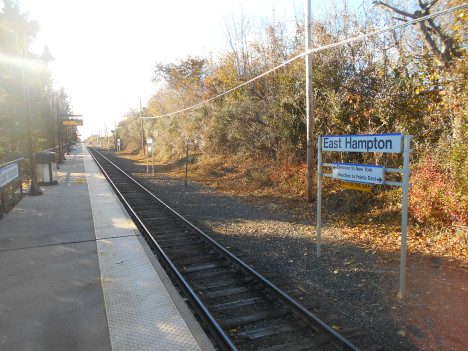
The Long Island Community Microgrid Project completes Stage 1 of the NY Prize
Using very high levels of locally generated solar and other distributed energy resources, the project represents a new approach to designing and operating electric grids.
TheLong Island Community Microgrid Project, an early grant recipient of the New York Prize Community Microgrid Competition, is now one of the first projects to completeStage 1: Feasibility Study. Once completed, the project will provide reliable power to the East End of Long Island, while saving hundreds of millions of dollars and demonstrating the feasibility of high levels of local renewable energy.
Utilizing very high levels of locally generated solar electricity and other distributed energy resources (DER), the Long Island Community Microgrid Project represents a new approach to designing and operating electric grids. Covering thousands of customers and located in the grid-constrained East End of Long Island, the Long Island Community Microgrid Project is designed to achieve nearly 50% of its grid-area electric power requirements from local solar generation. Importantly, the Long Island Community Microgrid Project will greatly enhance resilience by providing indefinite renewables-driven backup power for critical community facilities, while setting the stage to avoid hundreds of millions of dollars in transmission investments that otherwise would be required to deliver power to the East End of Long Island.The result will be an optimized local energy system combining local solar generation, energy storage, load control, and robust monitoring, communications, and control (MC2) capabilities. The Long Island Community Microgrid Project includes the following features:
- 15 megawatts (MW) of new solar photovoltaic generation
- 5 MW/25 megawatt-hour energy storage facility plus three smaller energy storage facilities
- State-of-the-art MC2system
- Coverage of over 3000 customer accounts–representing roughly 10,000 residents and employees–within the community microgrid
- Provision of indefinite renewables-driven backup power for multiple critical loads, including a fire station and the water pumping and filtration stations that provision all the fresh water to the area
- Deliver normal operating benefits through utility-scale peak shaving
- Demonstrate robust community microgrid capabilities over a substation grid area, which is the basic building block of an electric grid and can be easily proliferated throughout the utility service territory and replicated by other utilities across New York and around the world
- Showcase how to design and operate electric grids with unparalleled levels of local renewables and other DER; and optimizing resilience
The many benefits of the Long Island Community Microgrid Project include:
- Unparalleled penetration of local renewable energy with a concomitant reduced dependence on centralized, non-renewable power and local, oil-fueled peak generation facilities
- Advancement of New York Reforming the Energy Vision goals for achieving clean, resilient, affordable energy generation
- Peak power demand reduction of over 8 MW
- Over $38 million in avoided local transmission upgrade value and potential for $300 million in avoided transmission upgrades if the Long Island Community Microgrid Project is replicated throughout the region
- Millions of dollars saved through capacity charge reductions and energy arbitrage
- Over $32 million in wages and other economic value during the construction phase of the Long Island Community Microgrid Project, with millions more under ongoing operations
- Shift in wholesale power purchases from daily peak pricing periods to off-peak periods, realizing net savings in energy purchases of $2.5 million by 2022 and more than $500,000 annually thereafter
- $334,000 per day of avoided local outage value for the community served by Long Island Community Microgrid Project circuits during regional outage events
- Immediate and ongoing savings that result in lower electric rates for all PSEG Long Island utility customers
The Long Island Community Microgrid Project will provide renewables-based grid services to an area that includes thousands of utility customers with high vulnerability to severe North Atlantic storms. The Long Island Community Microgrid Project showcases how to manage grid services locally during grid outages and across dynamic seasonal variations, including those caused by a doubling of the population during the summer. Critical facilities supported by the Long Island Community Microgrid Project include two Suffolk County Water Authority water pumping and filtration plants and the Springs Fire District facility. Other critical facilities that could be incorporated include the local airport and additional emergency response facilities.
Community Microgrids are far more extensive than a typical microgrid, which only serves a single location with behind-the-meter resources. A key feature of a Community Microgrid is the ability to serve thousands of customers with local renewable energy while achieving economies-of-scale and providing renewables-driven power backup to critical facilities and services during grid outages. The Long Island Community Microgrid Project covers 3343 utility accounts across a single substation grid area. Since substation grid areas are the basic building blocks of an electric grid, the substation-level nature of the Long Island Community Microgrid Project ensures that its design can be readily extended across utility service territories and replicated by other utilities.
The Clean Coalition is currently preparing its proposal to advance the Long Island Community Microgrid Project toStage 2: Designof the NY Prize competition. KeyStage 2activities include: detailed assessments of technical design and system implementation; project valuation and investment planning; and finalizing project development, construction, and operational plans.

